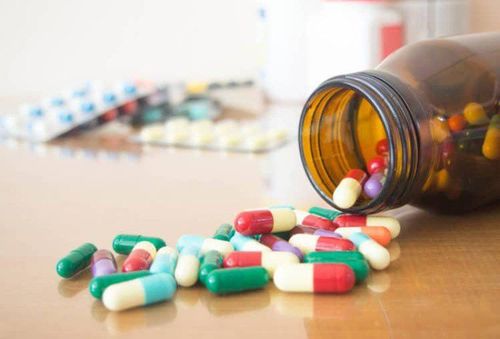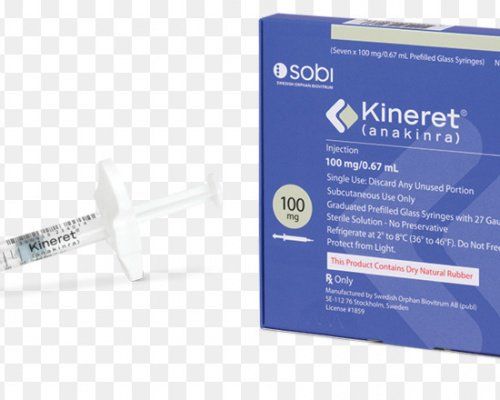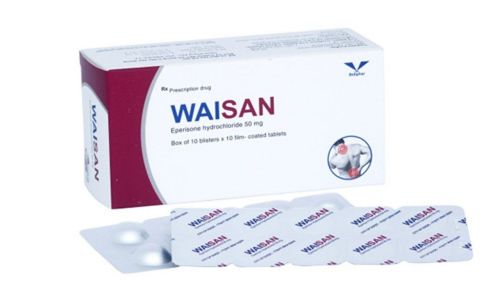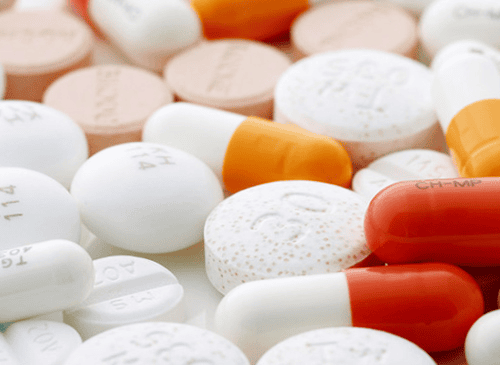This is an automatically translated article.
Fabalofen has the main ingredient Loxoprofen (as Loxoprofen sodium) 60mg along with other excipients. Please refer to the article below for more information about the uses, dosage and side effects when using Fabalofen.
1. What is fabalofen?
Fabalofen has the main ingredient Loxoprofen (as Loxoprofen sodium) 60mg, a non-selective inhibitor of cyclooxygenase enzymes and responsible for the formation of pain, fever and inflammation mediators with various biological activities. , including prostaglandins, prostacyclin, thromboxane, and arachidonic acid.
Fabalofen has strong analgesic, anti-inflammatory and antipyretic effects, indicated in the following cases:
Treatment of inflammation and pain relief in rheumatoid arthritis, osteoarthritis, shoulder periarthritis, neck syndrome - shoulder - arm , lower back pain, toothache. Relieve mild to moderate pain in patients after surgery, trauma or after tooth extraction. Relieves migraines, headaches, muscle aches or menstrual cramps. Antipyretic and anti-inflammatory in acute respiratory infections (including acute upper respiratory tract infection with acute bronchitis).
2. Contraindications of Fabalofen
Fabalofen is contraindicated in the following cases:
Patients with a history of severe or progressive peptic ulcer, gastrointestinal bleeding. Patients with severe liver and kidney failure. Patients with severe coagulopathy. Patients with decompensated heart failure. Patients with a history of hypersensitivity, allergy to any ingredient of the drug. The patient has or has a history of bronchial asthma, chronic obstructive pulmonary disease (due to the induction of asthma attacks with non-steroidal anti-inflammatory analgesics,...).
3. Dosage and usage of Fabalofen
How to use Fabalofen
Fabalofen is made in the form of tablets, each containing 60mg, for oral use.
Before taking, the patient should carefully read the instructions for use on the printed sheet in the medicine box and should consult with the doctor, pharmacist for more information about the drug.
When taking, swallow the tablet whole, do not crush the pill yourself. Take the medicine immediately after a meal or 1 hour after a meal to avoid irritation causing stomach pain.
Dosage of Fabalofen:
Acute upper respiratory tract infection: 60mg/time, taken 2 times a day. The maximum dose is 180mg/day. Patients with rheumatoid arthritis, osteoarthritis, lower back pain, shoulder periarthritis, neck - shoulder - arm syndrome, toothache: 60mg/time, 3 times a day. Patients after surgery, after trauma, after tooth extraction: 60mg/time, 3 times a day. In case of acute pain: Single dose: 60-120mg/time. Elderly: No dose adjustment is required.
4. Undesirable effects when using Fabalofen
Patients may experience the following side effects when using Fabalofen:
Body as a whole: Anaphylactic reactions (urticaria, itching, facial edema, laryngeal edema, dyspnea, hypotension...). Blood: Hemolytic anemia, leukopenia and thrombocytopenia. Skin: Rash, eczema, Stevens-Johnson syndrome and toxic epidermal necrolysis (Lyell's syndrome). Renal-urinary system: Acute renal failure, nephrotic syndrome and interstitial nephritis. Cardiovascular system: Palpitations, congestive heart failure. Digestive system: Abdominal bloating, epigastric pain, stomatitis, bleeding in the stomach, small intestine and/or colon. Respiratory system: Acute asthma, interstitial pneumonia. In case the patient experiences any of the undesirable effects listed or not listed above, it is necessary to immediately stop the drug and immediately contact a specialist for advice on management.
5. Precautions while using Fabalofen
Patients using Fabalofen should note the following information:
When using Fabalofe for a long time to treat chronic osteoarthritis, patients need periodic liver and kidney function tests, cardiac enzyme tests. , echocardiography. Closely monitor the patient's symptoms during treatment to detect undesirable effects of the drug early (anaphylaxis, early signs of gastrointestinal bleeding,...). In case the patient has superinfection, it is necessary to use the appropriate antibiotic combination for treatment. Do not use Fabalofen as monotherapy. Fabalofen should not be used concurrently with other NSAIDS of the same class. Patients at risk of developing cardiovascular thrombosis: Taking Fabalofen may increase the risk even more, leading to heart attack and stroke, and even death. Symptoms may appear early in the first weeks of drug use, the risk increases with the longer use, and this risk of cardiovascular thrombosis is mainly encountered in patients receiving high doses, in long time. Fabalofen may cause new or recurrent ulcers in the digestive system (eg, peptic ulcer, ulcerative colitis, Crohn's disease...). Therefore, patients with a history of peptic ulcer but must take Fabalofen for treatment should be combined with drugs that protect the gastric mucosa such as Misoprostol, proton pump inhibitors to reduce the severity of the effect. extra. Fabalofen should be used with caution in patients with a history of hematological abnormalities because of possible side effects such as hemolytic anemia. Caution should be exercised when prescribing to patients who have or have a history of liver or kidney disorders because an increase or recurrence of elevated liver enzymes, proteinuria, degree of renal failure or blood potassium may occur. Fabalofen can cause bronchospasm, exacerbation of asthma. Patients with a history of bronchial asthma, chronic obstructive pulmonary disease should report their condition to the treating doctor. Pregnant women: Fabalofen is not indicated for pregnant women, especially in the last 3 months of pregnancy because of the risk of fetal renal dysfunction, leading to amniotic fluid deficiency and renal failure. Some other complications of prolonged oligohydramnios include slowed lung growth and spasticity of the limbs in children. In addition, Fabalofen can increase bleeding time, inhibit uterine contractions leading to prolongation of labor. Lactation: Fabalofen can be excreted in breast milk, so the drug should not be used in this population. In cases where it is imperative to use the drug, the mother should stop breastfeeding. Note when driving and operating machinery: Because Fabalofen can cause headaches and drowsiness, this subject must be careful when using the drug.
6. Overdose and missed dose of Fabalofen
Fabalofen overdose and management:
Fabalofen overdose: The signs and symptoms of Fabalofen overdose may be the same as those mentioned in the section Undesirable effects. How to handle overdose:
Currently there is no specific antidote for Fabalofen. Treat overdose with measures to reduce absorption such as gastric lavage or use activated charcoal and increase excretion. Regularly monitor pulse index, temperature, blood pressure; blood tests, liver and kidney function and plasma electrolyte levels. Missed dose of Fabalofen and what to do:
Management of missed dose Fabalofen: Take the dose of Fabalofen as soon as you remember, but if it is too close to the time of the next dose, skip the missed dose. Patients should not take double the prescribed dose. Fabalofen is indicated for pain relief, anti-inflammatory of rheumatoid arthritis, osteoarthritis, lower back pain, shoulder periarthritis, neck-shoulder-arm syndrome, toothache. Patients need to take medicine according to prescription and under the advice of a doctor, a pharmacist with expertise to ensure treatment effectiveness and avoid side effects.













